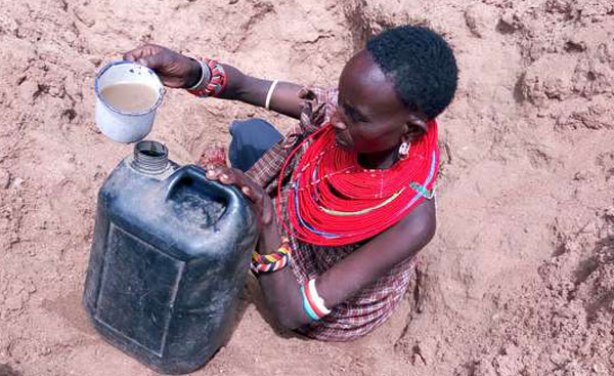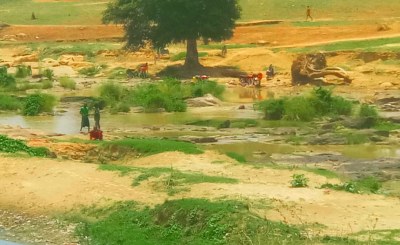-
Africa: Safe Drinking Water Should Mean Safe Collection Too - How to Reduce the Risks
The Conversation Africa, 10 December 2020
Globally, millions of people don't have access to water in their home. They collect water from shared water supply points or surface water sources and physically carry water… Read more »
-
Gambia: Residents of Fajikunda Lament Water Shortage
Foroyaa, 26 October 2020
The residents of Fajikunda have complained of water shortage in recent days. Read more »
-
South Africa: 'We Cannot Risk Our Lives By Drinking Dirty Water'
GroundUp, 23 September 2020
Residents of Mngazana village in Port St Johns say water from their communal taps is unusable. Read more »
-
Africa: Rape for Water in Nigeria
Africa In Fact, 23 September 2020
African women and girls in poor communities, forced to walk long distances to fetch water, run the daily risk of rape, beating and even death Read more »
-
Nigeria: Bajumba - Taraba Community Where They Only Fetch Water At Night
Daily Trust, 19 May 2020
At midnight in this Taraba community, the village well is opened for people with no other water source to fetch. Daily Trust reports on the reason for the nightly ritual. Read more »
How to Reduce the Risks of Fetching Safe Drinking Water for Women
Globally, millions of people don't have access to water in their home. They collect water from shared water supply points or surface water sources and physically carry water containers back home for household use. The importance of accessing water that's safe to drink and enough water for washing, cleaning and cooking is clear. But little attention has been given to the safety of water collection away from home, or to the health and safety of the people who typically do this work. It's most often women and girls from low income households who must queue for, collect and carry water home. There's a clear need for water supply systems that prioritise personal safety alongside the traditional goals of improving water quality and quantity and men should be encouraged to to help with water carriage through public health campaigns, to reduce women's injury risk and other adverse maternal and child health outcomes associated with water fetching, writes Dr Jo-Anne Geere for The Conversation Africa.
InFocus
-
Residents of three slums in Nairobi county's Embakasi South and Starehe, have suffered severe water shortages for the past three weeks. The areas are Mukuru-Kwa Njenga in Embakasi ... Read more »
-
November 19th is when the UN celebrates the invention of the toilet. Those who are fortunate enough to have access to one, spend more than a year of their lives on it, yet millions ... Read more »
-
A Nairobi not-for-profit organization has expanded from providing education in the Kenyan capital's largest slum to a range of services in two sprawling settlements that create ... Read more »
-
Cape Town faces an 80% higher chance of another 'Day Zero' drought by the end of the century if greenhouse gas emissions keep rising at current rates, as the South African city ... Read more »
-
Recently, news reports revealed plans by a Canadian oil and gas company, ReconAfrica, to explore for oil and gas in some of Africa's most sensitive protected areas. These areas ... Read more »

A woman fetches water from sandy holes in Ntepes, Samburu County in Kenya (file photo).









